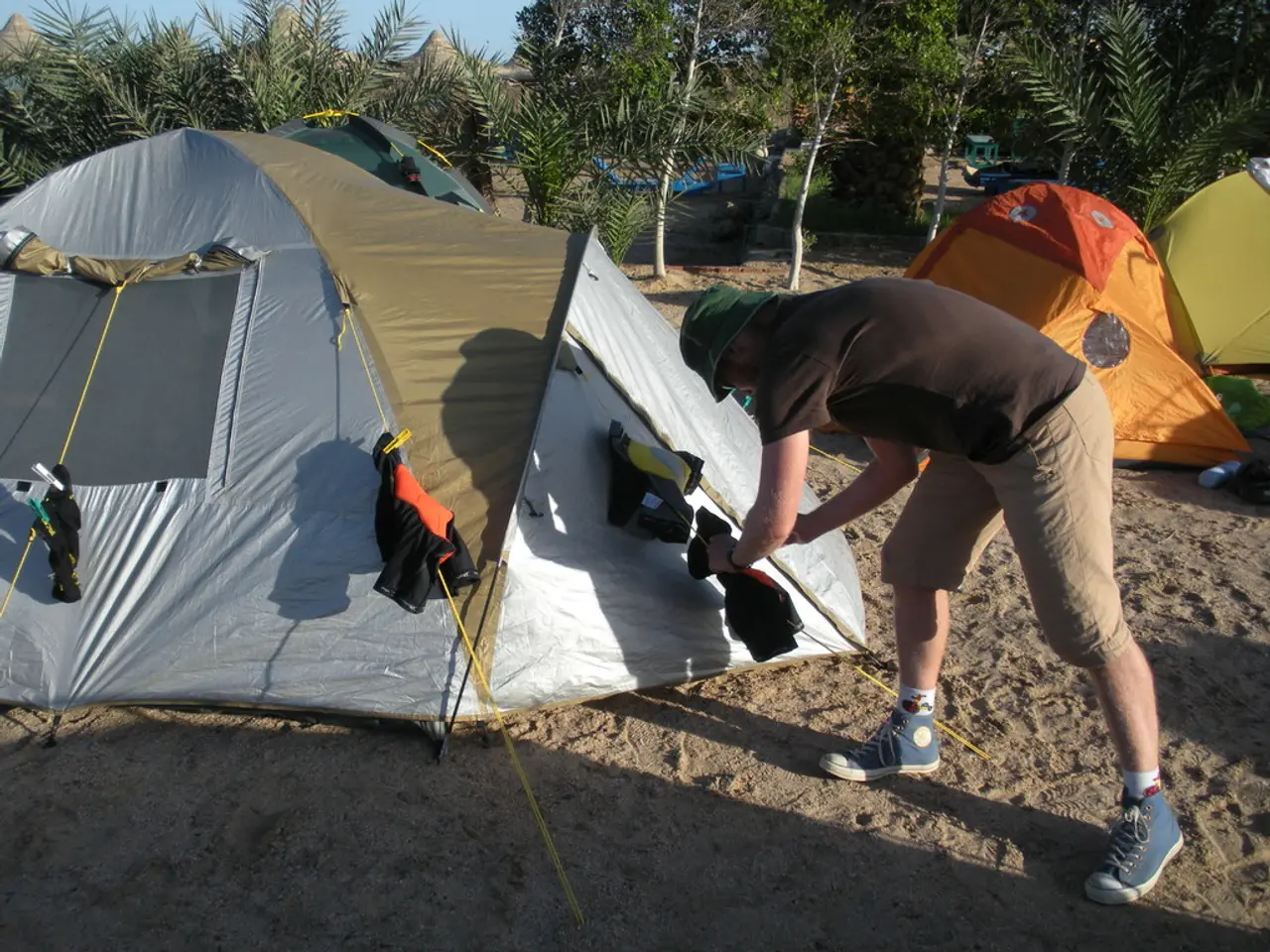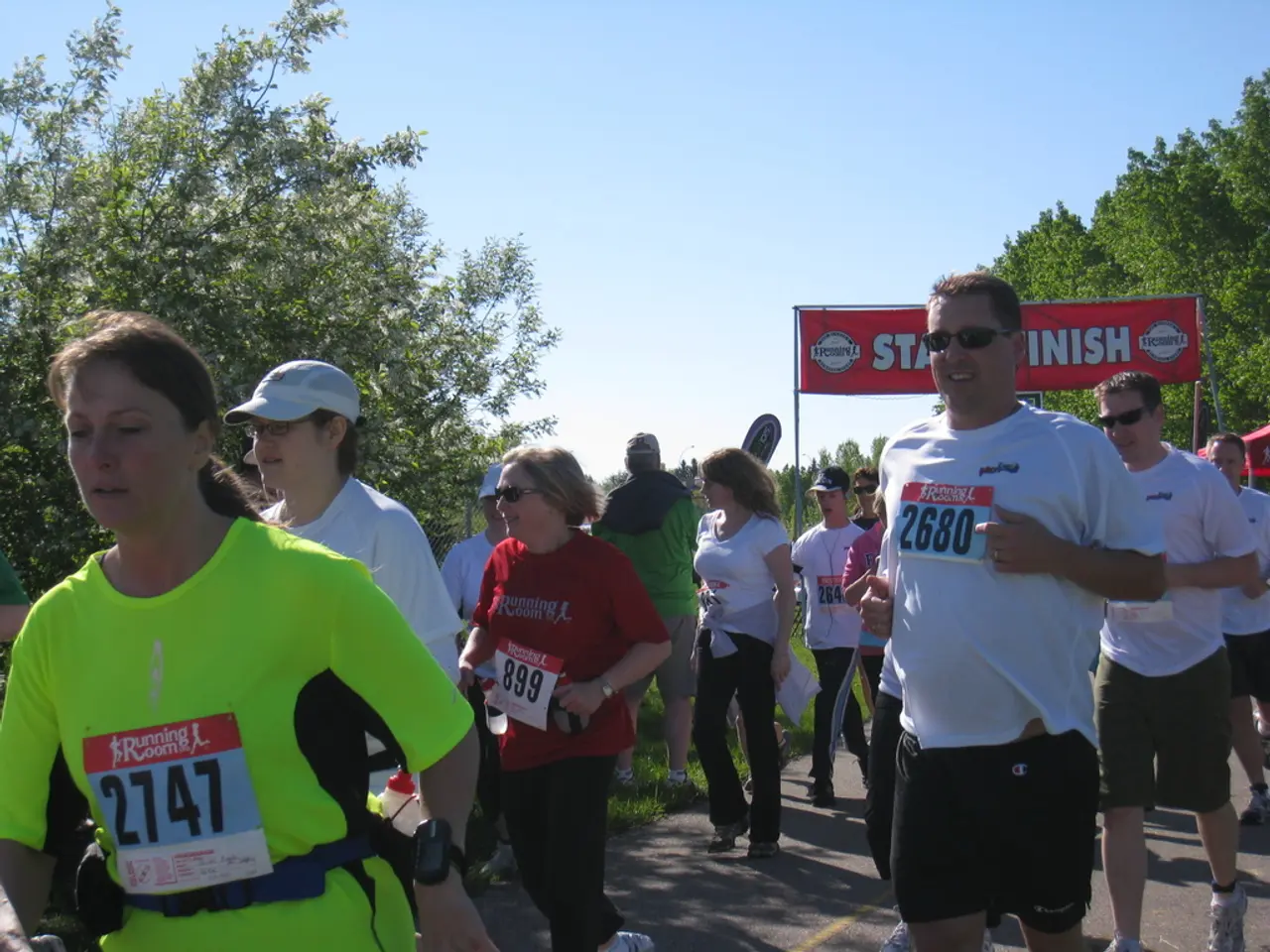Negotiating Your Initial Mountain Peak Ascent of 14,000 Feet with Potential Pleasure Included
Preparing for Your First 14er Climb: A Comprehensive Guide
Climbing a 14er, a mountain that rises at least 14,000 feet above sea level, can be an exhilarating experience for any outdoor enthusiast. Here's a guide to help you prepare for your first 14er climb.
Proper Planning is Key
A successful 14er climb requires careful planning. Share your route and expected return time with someone, research your route, check recent trail reports, and look out for closures or weather changes. Some popular beginner-friendly 14ers include Mount Bierstadt, Gray's Peak, Torrey's Peak, and Mount Sherman in Colorado.
Mount Bierstadt: The Ideal Starting Point
Mount Bierstadt, often recommended for first-time hikers, features mostly Class 1 hiking with a little Class 2 scrambling near the summit. It does not require a permit and is about 7.2 miles round trip with an elevation gain of 2,736 feet, typically taking 5-7 hours to complete. Bierstadt is very popular, especially on summer weekends, and is dog-friendly on leash.
Quandary Peak: A Solid First Choice
Quandary Peak is another option, requiring advance planning to catch a bus to the trailhead due to parking limits. It offers a steady elevation gain and no technical climbing, making it an accessible choice for beginners.
Training and Acclimatization
Before embarking on a 14er climb, it's advisable to train on shorter, lower elevation day hikes to build stamina and acclimate to altitude conditions. Joining local mountaineering or hiking groups can provide support, guidance, and safety for first-time 14er climbs.
Preparing for the Challenge
Keeping expectations in check is important, as climbing a 14er is challenging regardless of fitness level. Staying hydrated and fueled is essential, as the body burns through calories and dehydrates quickly. Pack a small first aid kit, Swiss Army Knife or Leatherman, sunscreen, trekking poles, a comfortable backpack, and a rain jacket for wind protection and a dry spot to sit.
Clothing and Equipment
Clothing made of Merino wool and synthetic fabrics that dry fast and wick sweat is recommended for 14er hikes. Trails with 4WD access might require it, so it's essential to check trailhead access before planning a hike. A Garmin InReach for GPS and emergency communication is also advisable.
The Importance of Acclimatization
Proper acclimatization is crucial for a successful 14er climb. Symptoms of altitude sickness include headaches, dizziness, fatigue, and shortness of breath. Training, focusing on steady-state cardio, high-intensity intervals, and strength training, particularly for the legs and core, is essential.
Safety First
The summit is not worth risking one's safety. It's important to know when to push and when to stop during a 14er climb. Snacks provide fast energy during a 14er hike, and hiking itself is a great way to train.
Exploring More Options
For those seeking a more challenging experience, the Decalibron Loop offers the summiting of four peaks in one go. AllTrails and 14ers.com are useful resources for researching routes, trailhead access, and conditions.
Enjoying the Journey
When reaching the summit, take time to appreciate the achievement and rest. Remember, while no 14er is "easy," these mountains are among the least technically demanding and most beginner-friendly options. Happy climbing!
- For your first 14er climb, Mount Bierstadt is often recommended for first-time hikers, featuring mostly Class 1 hiking with a little Class 2 scrambling near the summit.
- It's advisable to train on shorter, lower elevation day hikes to build stamina and acclimate to altitude conditions before embarking on a 14er climb.
- Keep a small first aid kit, Swiss Army Knife or Leatherman, sunscreen, trekking poles, a comfortable backpack, and a rain jacket for wind protection and a dry spot to sit in your hiking gear.
- To prepare for the challenge of climbing a 14er, pack clothing made of Merino wool and synthetic fabrics that dry fast and wick sweat, and check trailhead access as trails with 4WD might require it.







